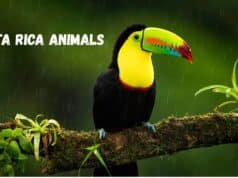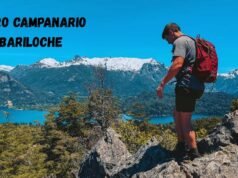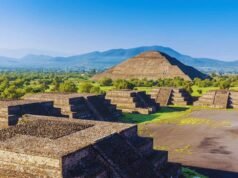Choosing between Kilimanjaro and a Mount Kenya hiking expedition is a common decision for travelers planning an East African adventure. Both are iconic African peaks, but they offer fundamentally different experiences in terms of scenery, difficulty, crowds, and cost.
This guide provides an honest, practical comparison to help you decide which mountain is the right choice for your trip.
As a company that arranges climbs on both mountains, Kenya Peaks Adventures has a deep understanding of the logistics and on-the-ground realities of each trek. We can help you plan an itinerary that includes either peak, often combined with a classic Kenya safari.
A Realistic Look at Scenery: Which Mountain is More Beautiful?
The visual experience on each mountain is a key differentiator, and this is a point frequently discussed by climbers who have done both.
Kilimanjaro is a massive, solitary volcanic cone. The trek takes you through several distinct ecological zones, from rainforest to alpine desert. The final ascent to the summit at Uhuru Peak offers an incredible view from the “Roof of Africa,” looking down on the clouds. However, many climbers note that the scenery on the ascent days can be monotonous, as you are essentially walking up the side of one large mountain.
Mount Kenya, in contrast, is an eroded volcanic peak with a collection of jagged summits, glacial valleys, and alpine lakes. From my own experience, the scenery is more varied and dramatic throughout the entire trek.
Routes like the Chogoria trail take you past stunning features like Lake Michaelson and through unique vegetation, including the giant lobelias and groundsels. For sheer scenic beauty and photographic opportunities day after day, Mount Kenya is often considered the superior choice.
Comparing Difficulty and the Realities of a Mount Kenya Summit

Both mountains are serious high-altitude treks that require a good level of physical fitness, but their primary challenges are different.
Kilimanjaro’s main challenge is its extreme altitude. At 5,895 meters (19,341 feet), the risk of developing acute mountain sickness (AMS) is very high, and it is the primary reason why many climbers do not reach the summit. The trek itself is a non-technical “walk-up,” but the final ascent is a steep and demanding slog on loose scree in very thin air.
The main trekking summit on Mount Kenya, Point Lenana, is at a more manageable altitude of 4,985 meters (16,355 feet). While still a serious high-altitude trek, the lower elevation makes a successful acclimatization schedule more achievable. This results in a higher summit success rate for a Mount Kenya hiking trip compared to Kilimanjaro. It is important to note that the true summits of Mount Kenya—Batian and Nelion—are technical rock climbs that require significant mountaineering experience.
The On-Mountain Experience: Crowds and a Sense of Wilderness
The atmosphere and feeling of solitude on each mountain are vastly different.
Kilimanjaro is a global “bucket-list” item. Its fame attracts a large number of climbers, and the most popular routes, like the Marangu and Machame routes, can be very crowded, especially during peak season. You will be sharing the trails and campsites with many other groups, which can detract from the feeling of being in the wild.
Mount Kenya receives significantly fewer visitors. The trails are quieter, and you are more likely to have campsites to yourself or with just a few other small groups. This provides a much more authentic and peaceful wilderness experience. If your goal is to feel a sense of solitude and connection with the mountain environment, Mount Kenya is the better option.
A Cost and Logistics Breakdown for Each Trek
There is a clear and significant cost difference between climbing the two mountains.
A trek on Kilimanjaro is considerably more expensive. This is due to several factors: the park fees in Tanzania are higher, the mandatory guided treks are longer (typically 6 to 8 days to allow for acclimatization), and the logistical costs for operators are greater. This makes it a more significant financial commitment.
A Mount Kenya hiking expedition is the more budget-friendly choice. The park fees are lower, and a standard trek to Point Lenana typically takes 4 to 5 days. This shorter duration and the lower logistical costs in Kenya result in a more affordable but equally rewarding high-altitude experience.
Practical Travel Tips
- Visa Requirements: Indian and other international travelers can apply for an eVisa online.
- Best Time to Visit: For a Kenya safari, June to October is ideal; for Mount Kenya hiking, January–February and July–September offer the best conditions.
- Health & Safety: Vaccinations, malaria prevention, and travel insurance are strongly recommended.
- Packing Essentials: Light clothing for safaris, warm layers for mountain hikes, sunscreen, insect repellent, and sturdy hiking boots.
Conclusion: Choosing the Right Mountain for Your Adventure
The final decision depends on your personal goals. The simplest way I explain it to clients is this: climb Kilimanjaro for the title of having stood on the highest point in Africa; climb Mount Kenya for the journey, the scenery, and the love of mountaineering.
Both of these incredible treks are often combined with a classic wildlife safari. An itinerary that includes several days of trekking followed by a relaxing Kenya safari in a destination like the Masai Mara is a popular and well-balanced East African adventure. The logistics of combining a multi-day mountain trek with a safari, including arranging transport, gear, and accommodation, can be complex.
This is where a custom trip planner is essential. Kenya Peaks can build a seamless itinerary that integrates your mountain climb with your wildlife viewing goals, ensuring that all the transport, timing, and details are handled for you, allowing you to focus on the adventure.















